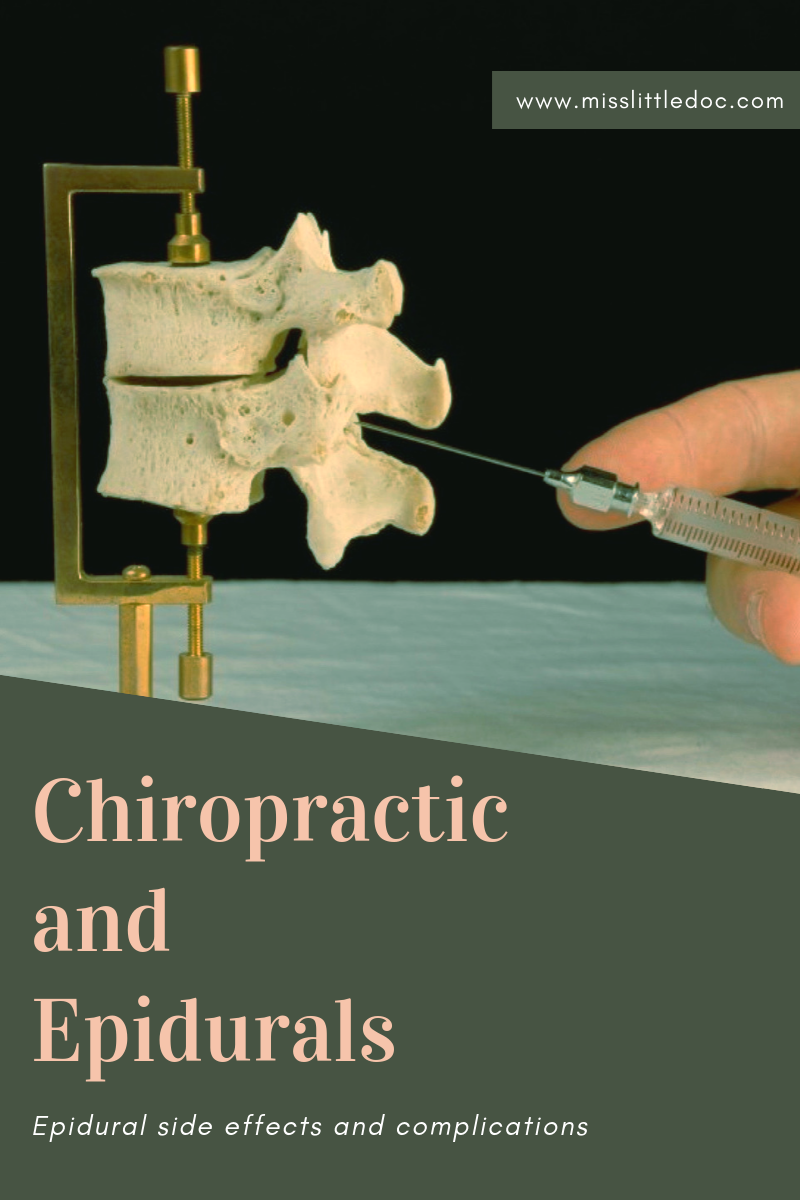Chiropractic and Epidurals
Epidural anesthesia (EA) is the most commonly used method of pain relief during labor today. In fact, approximately 80 percent of vaginal deliveries involve EA, according to “The Journal of Obstetrics and Gynecology“.
Epidural anesthesia is effective at pain cessation during labor, and may help a woman get through an exhausting and long labor by allowing her to rest. But other well-known and documented outcomes of EA including the following:
- It slows labor, leading to augmentation with Pitocin;
- It promotes ineffective pushing, leading to the use of vacuum extraction, forceps and excessive pulling by the birth provider;
- It often causes a significant drop in blood pressure, leading to the use of electronic fetal monitoring (EFM) for fetal distress;
- It requires intravenous fluids for precautionary measures, which often restrict a woman to laboring on her back.

Aside from the physical restraints a woman must overcome in order to manage pain during labor and birth, there is the psychological persona of a laboring woman in pain. Robbie Davis-Floyd spoke at the 2006 Midwifery Today Conference and her description of today’s typical hospital birth was a follows: A woman experiencing normal labor pain carries an immense amount of strength. Once she enters a hospital, it becomes challenging for her.
She exchanges her comfortable and familiar clothing for a hospital gown; she now becomes a “patient”. A patient, by definition, is somebody who is being given medical treatment. She finds herself in an institution that has among its key objectives the ability to “control pain“. That faint glimmer of strength starts to fade. Why does she feel the pain? No one can tell her, but they can make it go away! The fetal monitor and IV are in place, waiting for a crisis to occur. Davis-Floyd likens this to a woman’s umbilical cord connecting to the hospital, essential for her survival. If you plan for something to fail, it probably will. In her book “Birthing From Within“, Pam England remarks that in a hospital the laboring woman regresses from the lead role in her labor and birth to a supporting character.
Chiropractic Implications
From a chiropractic standpoint, EA can lead to serious consequences for a spine. The “World Health Organization” reports that several reports and trials showed EA increased the number of vaginal operative deliveries, such as forceps or vacuum extraction. These methods are used for several reasons. A numbed bottom half kills the feedback mechanism to the brain for effective pushing at the right moments. Instead, a machine is read by a third party, who tells the woman when her body is ready to push.
A numbed bottom also prevents a mother from getting off her back and effectively pushing using gravity and strength. Her pelvic capacity becomes limited because of her inability to move around. A prolonged journey through an inadequate space is a recipe for significant stress on a newborn’s spine.
Labor augmentation with Pitocin, commonly associated with EA, is frequently administered to make up for the ineffective pushing. The artificial contractions resulting from the Pitocin can place abnormal and unnatural pressure on the cervical spine of a newborn. the dance that mother and baby innately move through between natural uterine contractions during labor is null and void. The newborn is forced to move with unnatural and forceful contractions. Should the baby not have enough time to move through the natural head flexion, extension, and rotational movements needed for restitution, cervical spine damage can occur. Ineffective pushing may also require assistance to get the baby out of the birth canal.
C-Sections
Epidural anesthesia has been linked to an increase in cesarean births due to failure to progress. This is because usual tactics applied after EA are a recipe for a “failure to progress” diagnosis. A c-section birth requires no expulsive efforts on the woman’s part and complete reliance of pull and traction through a small incision in the abdominal wall and uterus. this undeniably puts a significant amount of tension on a newborn’s spine and has been linked to a host of newborn and maternal injuries, including nerve damage. Having your newborn’s spine check after birth makes a difference in the function of his or her nervous system.

Perhaps the most concerning of all is the face that EA is so effective at what is designed to do– eliminating sensation. Dr. Chung Ha Suh, Ph. D., professor of mechanical engineering at the University of Colorado, received the first-ever, National Institute of Health grant for chiropractic research. His research showed that pressure from subluxation equal to the weight of a quarter can decrease nerve transmission by 60%. This pressure can occur without any pain, or other signs or symptoms. In other words, the vertebral subluxation complex, a condition in which there is abnormal and decreased movement of the spinal bones, often occurs without any immediate signs or symptoms.
Although, a newborn can exhibit signs of subluxation, such as difficulty turning his head or colic symptoms, it is very likely there will be no symptoms at all. Combine this with a woman’s inability to experience the sensations of birth and she might assume that no spinal trauma to the baby could have occurred. The literature associated with epidural anesthesia clearly indicated the need for a close evaluation of a newborn’s spine soon after birth and a discussion of epidural use during labor and birth a must in the chiropractors office.

If you have any questions on pregnancy, labor, delivery or post-partum chiropractic care, give us or a chiropractor near you a call! There are many ways chiropractic can help.
~Dr.Lacey~
Carder Chiropractic Clinic, INC.
El Reno, OK 73036



